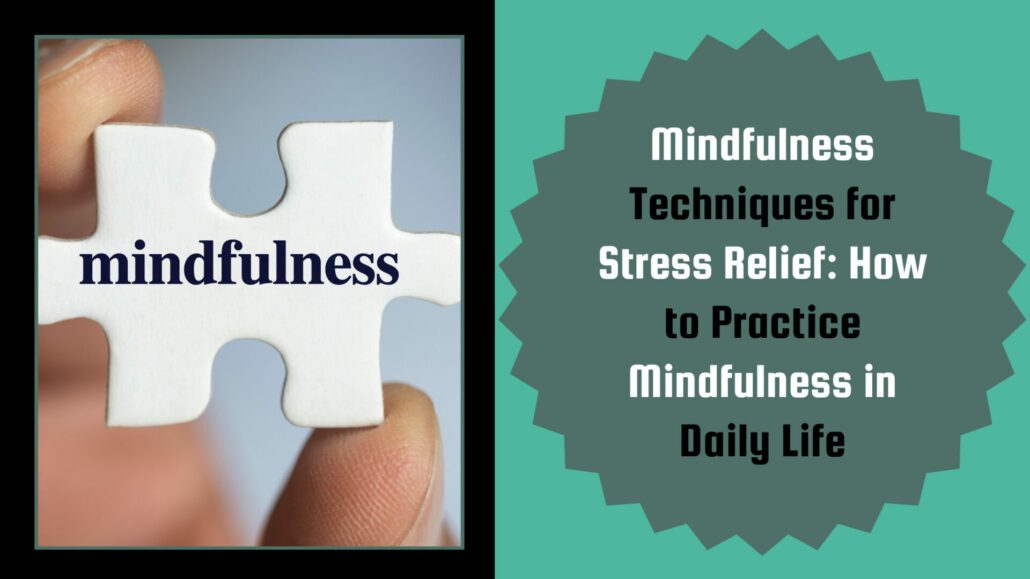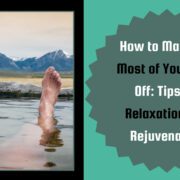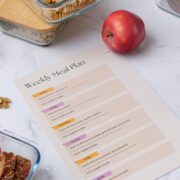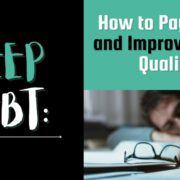Mindfulness Techniques for Stress Relief: How to Practice Mindfulness in Daily Life

Life can be overwhelming and stressful. With work deadlines, personal obligations, and a myriad of other responsibilities, it’s no wonder that many of us feel anxious and overwhelmed. But what if there were simple ways to combat these feelings and find relief from the stress in our daily lives? Enter mindfulness techniques for stress relief. These practices can help you live a more balanced and peaceful life, and they’re easier to incorporate into your daily routine than you might think.
In this article, we’ll explore various mindfulness techniques that can help you reduce stress and anxiety, and answer some common questions about mindfulness and meditation. So let’s get right into it and discover how to practice mindfulness in daily life!
Mindful Breathing Exercises for Stress Relief
One of the simplest and most effective mindfulness techniques for stress relief is mindful breathing. It’s a foundational practice that can be done anywhere, anytime. Here’s how you can get started:
- Find a comfortable and quiet place to sit or lie down.
- Close your eyes and take a deep breath in through your nose, counting to four.
- Hold your breath for a count of four.
- Slowly exhale through your mouth, counting to four.
- Repeat this process for several minutes, focusing on your breath and the sensation of the air entering and leaving your body.
This simple exercise can help you feel more relaxed and centered, and it’s an excellent way to take a break from the stress of daily life.
Mindful Meditation Techniques for Relaxation
Meditation is an ancient practice that has been proven to help reduce stress and anxiety. The most powerful meditation for stress relief and anxiety reduction is mindfulness meditation. It’s a practice that focuses on being fully present in the moment, without judgment or distraction.
To practice mindfulness meditation:
- Find a quiet and comfortable space.
- Sit in a comfortable position with your back straight and your hands resting on your thighs.
- Close your eyes and focus on your breath, noticing the sensation of the air entering and leaving your body.
- If your mind wanders, gently bring your focus back to your breath.
- Continue this practice for 5-10 minutes, or longer if desired.
Regularly practicing mindfulness meditation can help you feel more relaxed, focused, and in control of your thoughts and emotions.
Mindful Movement Practices for Stress Relief
Mindful movement, such as yoga or tai chi, is another excellent way to relieve stress and anxiety. These practices combine physical movement with mindfulness, helping you to connect with your body and find a sense of calm. To get started, consider joining a local class or exploring online resources to learn the basics.
Mindful Eating Habits for Relaxation and Stress Relief
How we eat is just as important as what we eat when it comes to managing stress. Mindful eating is a practice that can help you slow down, savor your food, and be more present during meal times. To practice mindful eating:
- Sit down to eat without distractions (no TV, phone, or computer).
- Take a moment to appreciate the food in front of you and express gratitude for the nourishment it provides.
- Chew each bite slowly and thoroughly, savoring the flavors and textures.
- Put down your utensils between bites and take a few deep breaths.
- Continue eating mindfully, being fully present with each bite.
Incorporating mindful eating habits can help you feel more relaxed and satisfied during meals, reducing stress and anxiety.
Mindfulness Exercises for Anxiety Relief
In addition to the techniques mentioned above, there are specific mindfulness exercises that can help with anxiety relief. These include:
- Body scan meditation: Lie down and focus on each part of your body, one at a time, starting from your toes and moving up to your head. Notice any sensations or tension and consciously relax each area as you go.
- Loving-kindness meditation: Sit comfortably and silently repeat phrases of kindness and compassion towards yourself and others, such as “May I be happy, may I be healthy, may I be safe, may I be at ease.”
- Visualization: Close your eyes and imagine a peaceful scene or situation that brings you a sense of calm and relaxation. Focus on the details and allow yourself to fully experience the sense of peace.
Regularly practicing these exercises can help reduce anxiety and promote a greater sense of well-being.
Mindfulness Practices for Improving Focus and Concentration
In today’s fast-paced world, maintaining focus and concentration can be challenging. Mindfulness practices can help improve your ability to stay present and attentive. One effective technique is the “STOP” practice:
- Stop what you’re doing.
- Take a few deep breaths.
- Observe your thoughts, feelings, and physical sensations.
- Proceed with your task, bringing mindful awareness to your actions.
By regularly incorporating the STOP practice into your daily routine, you can improve your focus and concentration, making it easier to stay on task and be more productive.
Mindfulness Techniques for Improving Sleep
A good night’s sleep is essential for overall health and well-being, but stress and anxiety can interfere with our ability to rest. Mindfulness techniques can help improve sleep quality by calming the mind and promoting relaxation. Try these practices before bedtime:
- Progressive muscle relaxation: Tense and relax each muscle group, starting from your toes and working your way up to your head. This can help release physical tension and promote relaxation.
- Mindful breathing: Practice deep, slow breaths, focusing on the sensation of the air entering and leaving your body. This can help quiet your mind and prepare you for sleep.
- Guided meditation: Listen to a guided meditation specifically designed for sleep, focusing on the calming voice and imagery to help you drift off to sleep.
By incorporating these mindfulness techniques into your nightly routine, you can improve your sleep quality and wake up feeling more refreshed and energized.
Mindful Journaling for Stress Relief
Journaling is an excellent way to process thoughts and emotions, and mindful journaling can provide an added layer of stress relief. To practice mindful journaling, find a quiet space and set a timer for 10-15 minutes. Write about your thoughts, feelings, and experiences, without judgment or self-censorship. Allow your thoughts to flow freely and notice any patterns or themes that emerge.
Practicing mindful journaling regularly can help you gain insight into your emotions and experiences, providing a healthy outlet for stress and anxiety.
Wrapping Up
In conclusion, incorporating mindfulness techniques into your daily life can significantly improve your well-being and help you find relief from stress and anxiety. By practicing mindful breathing, meditation, movement, eating, and journaling, as well as specific exercises for anxiety relief, focus and concentration, and sleep improvement, you can cultivate a more balanced, peaceful, and fulfilling life. Give these practices a try and discover the transformative power of mindfulness for yourself!
Stay healthy, homies!
Tony has a bachelor’s degree from the University of Phoenix and over 11 years of writing experience between multiple publications in the tech, photography, lifestyle, and deal industries.







Leave a Reply
Want to join the discussion?Feel free to contribute!